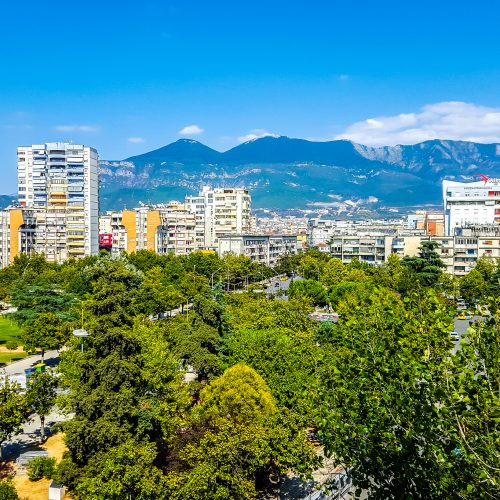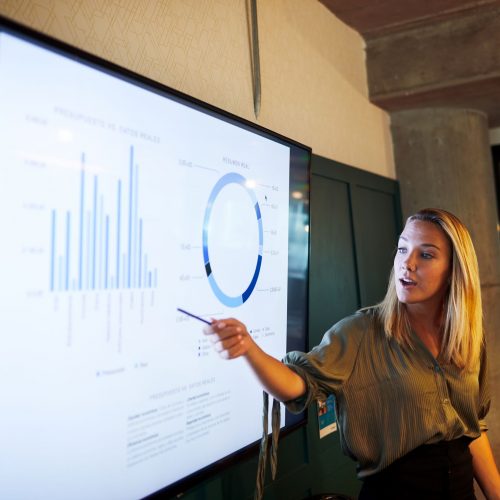Context and policy overview
Since the 1990s the Taipei City authorities have tried to bring citizens into the public policy decision-making process. In 1995, in an effort to ease the cumbersome process of sending suggestions and complaints by mail, as was common at the time, the Taipei authorities launched a municipal email that could generate a rapid response at any time of day. The same year, the municipality launched a bulletin board system (BBS) that took the best ideas submitted by email and posted them on an open webpage to highlight the public’s suggestions in a transparent manner.[1] By 2005 the government had expanded the system to introduce a first-of-its-kind citizens’ hotline as a handy way for citizens to report issues they encountered when using public services.
While these citizens’ communication services were a great opportunity for the public to become involved in municipal decision-making, once they had been in operation for a number of years, they began to throw up a number of challenges.[2] First, the authorities noticed that their multiple channels of communication (municipal mail, hotline, in person, and so on) often caused the same complaint to be filed repeatedly, wasting time and money. Second, the technology being used meant complaints and reports were not automatically transferred to the competent authority, leading to a lack of actual response. This was because the system lacked geographic information system (GIS)IS-based technologies that could identify the location of issues and coordinate a dispatch service. Lastly, complaints could not be registered together with other important information, such as visual evidence of, say, a burst pipe or broken traffic light, leaving municipal response units to operate blind when they went out to address problems.
Over time, with the development of science and technology, the authorities have gradually been able to upgrade their systems to respond to public queries more accurately and effectively. Today, the system uses advanced messaging and communication technology so that citizens can report issues in real time, be it from potholes and public disturbances to unusual smells coming from sewers.
Implementation
Phase 1: the “1999” Taipei citizens’ hotline (2005-08)
This first-generation “1999” hotline was launched in 2005, offering consultations, transferring services and accepting petitions from members of the public.[3] Consultations accounted for more than 50 per cent of services.[4] However, the hotline was not as successful as expected.
Operated by the staff of the Taipei City authorities, no one answered the calls out of hours, while just 16 per cent of the public knew about the hotline to begin with.[5] In some cases, staff could only act as a telephone exchange, transferring calls to the competent agency when they involved complaints and reports from the public, or if the call centre did not have the information it needed to answer the query.[6]
Moreover, the responsibilities of different municipal agencies were unclear, making it difficult to respond efficiently. Citizens could only check the status of their application (complaint, accusation, appeal or otherwise) by calling the hotline[7] because of the technology available at the time.
Phase 2: how smartphones affected the “1999” citizens’ hotline (2008-16)
After 2008 the massive increase in smartphone adoption created more challenges for the original hotline, with its interoperability with new technologies called into question. In response, Taipei City assigned a dedicated department, called the Research, Development and Evaluation Commission (RDEC),[8] to take charge of optimising the “1999” service. This included integrating the original 18 dedicated lines into a one-stop citizens’ advice shop and increasing the call-centre service to 100 agents from 31, including three video sign-language and 12 operators for the visually impaired. It would operate 24/7, establishing a database of frequently asked questions (FAQs) for faster enquiry response, amid other improvements.
Taipei City outsourced the operation to Chain Sea Information Group under a public-private partnership (PPP) model, for a bid of €1.5 million (TWD 46.6 million) in 2009. This group was responsible for the call-centre service, personnel training, service quality assessment, manpower scheduling and so on.[9] The 24/7 operation resolved many of the issues of the previous system. In addition, the successful integration of the various lines is estimated to have saved nearly TWD 2.86 million (around US$ 102,600) in telephone charges a year.[10]
Some of the main measures implemented to improve the first-generation hotline include the following.
- Introduction of interactive voice response (IVR)[11]
The IVR system provides automated voice services to address the large number of incoming calls and repeated inquiries. It also helps to relieve any sudden increases in call traffic. Taipei City’s “1999” hotline has made extensive use of IVR to provide important municipal information, such as feedback on service, which can be surveyed in real time, depending on the service quality of the operator.
- Establishment of an FAQ database
To avoid situations in which operators were unable to answer general queries, the city developed a database of FAQs. It integrated the data provided by different municipal departments to answer common queries from the public.[12] The adoption of an FAQ database has improved the efficiency of operators and the accuracy of information given to the public, resulting in a significant reduction in the number of calls to municipal agencies. It has also prompted agencies to update the required information in real time.[13]
Moreover, petition cases have been analysed and common complaints and repeated dissatisfaction issues have been screened out. The system provides the mayor with continuous reference points for planning and administration to improve the efficiency of municipal services.[14]
- Dispatch service
To clear incidents more efficiently, the dispatch service is jointly managed by 20 different municipal agencies. If the call centre receives an incident requiring technical support, the operator immediately transfers the call to the competent agency through its internal computer system. A task force[15] is dispatched to handle the incident and is required to log its work within a given timeframe (for example, six hours to repair a traffic light and log the work).[16]
- Sign-language service
Cooperating with private organisations, such as the Chinese Deaf Association, PChome, Skype and others, the city provided sign-language video services via Skype to citizens with hearing impairment.[17] This service helps reduce the information gap for hearing-impaired citizens and enables them to receive instant help on an equal basis.
- Real-name registration
A real-name registration process was adopted to prevent the public from abusing the “1999” services when reporting incidents or complaints or logging petitions.[18] To log a petition, the petitioner would need to leave their name and mobile phone number before the case could be successfully filed.[19] The municipal authorities would contact the citizen in question to clarify the situation if necessary.
Phase 3: the 4G era and Hello Taipei (2016 to present)
With the advent of the 4G network, Taipei City launched the Hello Taipei app in 2016 to integrate various municipal services. The Hello Taipei app has introduced: (i) municipal service integration; (ii) GIS and big data; (iii) an instant upload feature; and (iv) quick response.
Hello Taipei integrates complaints, petitions and reports received by municipal email, through “1999” and from paper-based files. The system will then forward the file in question to the competent department. Citizens can upload videos and photos of accidents or damage to public property, allowing the authorities to dispatch its task forces accordingly. The city also incorporated a GIS feature into the dispatch system. Thanks to the GIS, the city’s task forces can pinpoint exact locations. Big data analysis and GIS are also used to analyse historical cases and public opinion to try to anticipate the needs of citizens and improve the overall efficiency of city services.
Phase 4: the 5G era and future applications
With the introduction of 5G, Taipei City hopes to adopt voice over internet protocol (VoIP) technology to further optimise the “1999” hotline service and the Hello Taipei app in the near future,[20] providing citizens with a more convenient and efficient channel for expressing their opinions.
Barriers and factors critical to success
Cross-departmental integration
Between the first and second generations of the “1999” hotline service, Taipei City encountered strong opposition from municipal departments when merging the 18 extensions into one hotline. To overcome these hurdles and with the backing of the mayor, the RDEC played the role of mediator, facilitating communication between agencies and explaining the benefits of the merger. After successfully consolidating all extensions into one, the RDEC clarified the role of each agency when it came to different public services. The commission also coordinated agencies keen to claim their own responsibilities, requiring them to provide data to create the FAQ database, which was fundamental for streamlining the consulting service.
- FAQ database
Both the “1999” hotline and Hello Taipei benefited from the FAQ database. The city government galvanised municipal departments into creating the FAQ database, coordinating its creation. It eventually contained more than 12,000 responses and improved the hotline’s operational efficiency. It also provided immediate and correct answers to citizens. The “1999” hotline receives around 310,000 calls per month and more than 180,000 can be dealt with directly and answered by the call centre. Citizens can also consult the FAQ database on the Hello Taipei web/app for updates on the latest public services.
- Clear standard operating procedure (SOP)
The efficiency of “1999” depends on its standard operating procedure (SOP). To this end, it first categorises incoming calls into groups, so neither the operator nor the public wastes time repeating the question. Second, the operator can give an immediate response based on the FAQ database. Third, if the problem requires technical assistance, the operator can transfer the call to the competent agency, which can then send a task force to the scene. This procedure clarifies each party’s role, so everyone can focus on their job.
- A PPP with well-defined criteria
To offer a better service to the public, Taipei City cooperates with the Chain Sea Information Group under a PPP model, with the contract renewed annually. The RDEC sets strict criteria for assessing the services Chain Sea Information Group provides and to ensure that the call centre’s services meet expectations.[21]
- Service quality: the call-through rate to a dedicated person within 20 seconds should be 85 per cent (calculated daily).
- Hang-up rate: the daily hang-up rate should not be higher than 3 per cent.
- Maximum waiting time should not exceed three minutes during peak hours (09:00-18:00) and not exceed four minutes in other periods.
- Turnover rate: the monthly turnover rate of operators should not exceed 6 per cent to maintain stable call-centre operational quality.
The “1999” hotline’s high-quality service is due to the strict criteria set out by the city authorities. Although the call centre is 100 per cent operated by a private company, the city has set rigorous standards to ensure that call-centre services meet expectations.
- Budget
“1999” is a toll-free dedicated line and Taipei City covers the telephone charges.[22] The following illustrates the budget, staff and equipment allocation involved in the “1999” citizens’ hotline in 2016-19.[23]
- The three-year government budget was set around TWD 81 million (US$ 3 million). The main costs were for contracting (78.74 per cent), communications expenses (14.85 per cent) and utilities, such as water, electricity and air-conditioning (6.41 per cent).
- The staff of the call centre were about 88-91 employees.
- The IT system was built in 2008, at a procurement cost of TWD 14.88 million (US$ 534,000). The systems maintenance budget is set every year. In 2019 it was set at TWD 7.98 million (US$ 286,000) for a period of 18 months.
Hello Taipei, launched in 2016, was jointly planned and developed by the RDEC and the DOIT (Department of Information and Tourism). The main cost involved is for system development and maintenance. The system cost TWD 10.25 million (US$ 368,000) to build and the average maintenance cost since 2017 has been TWD 1.62 million (US$ 58,000) annually.[24]
- Complaint and petitions handling mechanism
The city authorities imposed specific timeframes on every municipal department, regulating the timeframes for dispatching task-force teams, handling complaints and petitions and providing follow-up to citizens.[25] It also introduced performance-based evaluation to ensure that all complaints and petitions were handled properly. For instance, citizen satisfaction, handling rates and average processing times are considered when evaluating a department’s key performance indicators.[26]
- Data security and privacy protection
The data and privacy protection measures rolled out by the “1999” hotline and Hello Taipei app comply with national cybersecurity protection law.[27] To protect privacy, phone operators have no access to any personal information (such as names or phone numbers) once it is registered in the system. All activities on the system are also recorded and taken into account in the evaluation of performance.[28]
Results and lessons learned
“1999” has facilitated the process of problem solving. For example, Taipei’s sanitation has been greatly improved, as the call centre immediately contacts the environmental protection department when citizens report illegal dumping.[29] The call centre also receives calls from citizens seeking emotional support. When transferring them to a suicide prevention hotline, operators also provide them with practical information about public services (for example, applying for food stamps).[30]
Since 2008 the “1999” hotline has received more than 23 million phone calls and dispatched more than 2.8 million task-force teams to handle incidents.[31] Overall, more than 85 per cent of users are satisfied with its service quality and more than 88 per cent of users say they are willing to use the city hotline if an incident occurs.[32] Monthly, the Hello Taipei app deals with more than 26,000 reports; cumulatively, it has dealt with more than 1.2 million. The Taipei authorities plan to integrate 1999 and Hello Taipei in future. Currently, the “1999” hotline remains indispensable, as older citizens are not as tech-savvy.
Cities interested in operating a city hotline can learn from Taipei’s experience.
- The quality of the FAQ database dictates the success of the city hotline. Constantly maintaining and updating the database allows the call centre to answer calls promptly and correctly.
- Building the FAQ database requires cross-departmental negotiation and participation, which a mediator agency can facilitate.
- PPP creates a win-win situation for everyone. The city can focus on the bigger picture (for example, quality control, FAQ database maintenance), while the privately operated call centre can provide job opportunities to the public. In Taipei, the call centre recruited those from socially disadvantaged groups.
- A city hotline is more than a number that solves citizens’ problems. By integrating it with evolving technologies, cities can proactively address urban challenges. For example, Taipei City processes hotline data using big data to improve its decision-making.

















